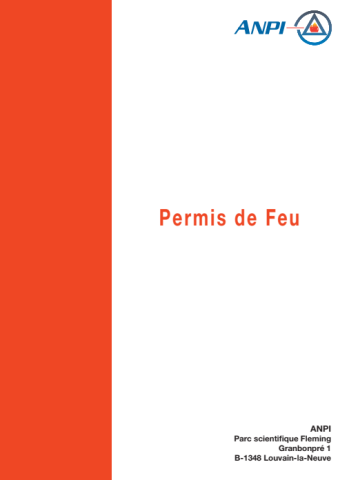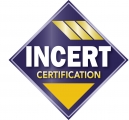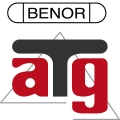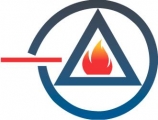
Hot work permit - It's not just a contractual requirement for insurers ...
Companies are particularly exposed to the risk of fire during construction, fitting-out, renovation and repair work. Hot-spot work involves various work techniques involving the use of an open flame, the projection of sparks, the production of high temperatures or the formation of "hot spots" in a component.
This is the case for occasional welding, cutting, grinding, thermal stripping or even the hot application of an impermeable coating. The list of high-risk techniques and situations is long. Examples of fires occurring during or following work of this type are unfortunately very common.
Every company needs to be aware of the risks involved in occasional hot-spot work. In fact, the Health and Safety at Work Code requires prior authorisation from the employer on the basis of a site-specific risk analysis.
The use of a fire permit, or rather a "hot work permit", has proved to be an effective means of preventing fires. What's more, drawing up a fire permit provides one-off proof that a fire risk analysis specific to the work has been carried out.
In any case, it would be a serious mistake to regard the drafting of a fire permit as a mere formality linked to the insurance contract.
It is a form by which an agent authorises an internal contractor or a third-party firm to carry out work involving an open flame or hot spot. Both parties (applicant and contractor) complete the document together before the work begins. A signed copy is given to each party and to the prevention advisor (or site manager), who must comply with the recommended prevention measures.
This document is also used to inform the various people involved, such as operators and inspectors, of the safety instructions.
Note
A hot work permit is not simply an authorisation to light a fire, but makes this authorisation subject to a risk analysis and compliance with appropriate prevention/protection measures. The English term "hot work permit" is more explicit.
A new ANPI hot work permit - 2023!
ANPI is proposing a completely revised and redesigned form:
- it responds to changes in legislation ;
- it incorporates the company's risk analysis and emergency plan;
- it includes 3 copies on multicopy paper - one copy is provided for the prevention adviser.
In addition to the applicant and the person carrying out the work, two new "players" are now involved: the operator and the inspector. Emphasis is placed on the competence of the people involved, the training and information of the participants and the operator, and the importance of control and monitoring during and at the end of the worksite.
Hot work permit in practice
No one should start work with an open fire, naked flame or hot spot without having received an order and authorisation to do so, with the exception of work inherent to the normal activity of the company and carried out in places specially and constantly assigned to them.
- The fire permit concerns temporary work carried out both by an internal operator and by an external firm.
- The permit will be drawn up jointly by competent persons representing the applicant and the contractor, as well as the prevention advisor(s), before the work begins.
- The operator must be informed of the risks and prevention measures to be observed.
- If several operators are assigned to the site, care must be taken to inform each operator.
- The inspectors will be informed of the risks, the areas to be monitored and the prevention measures during and after the work. The form specifies the zones, the safety instructions and the alert and alarm procedures to be implemented if necessary.
Is it compulsory?
- The hot work permit provides formal proof that a fire risk analysis has been carried out, in accordance with the provisions of the Code du bien-être au travail (cfr Code BET, Livre III, 3).
- The use of the fire permit is also required by the general contractual conditions of insurance companies.
Instructions for use
- Fire permits are in the form of mimeographed forms. The first copy is intended for the person requesting the work, the second for the firm carrying out the work and the third for the prevention advisor.
Validity
- The hot work permit is valid for one day.
- It must be renewed every day or whenever there is a change in the working environment (operator, place or method of work, etc.) after authorisation from the requesting authority, the insurer or on the basis of a risk analysis.
Do I need to keep it?
- For a minimum of 48 hours, as long as the work has not been completed and until the final inspection. Archiving fire permits makes it possible to trace the history of the work undertaken.
How do I get one?
Order it from the ANPI e-shop.






